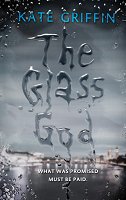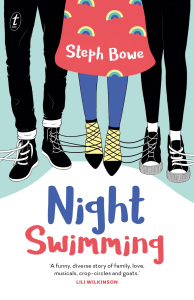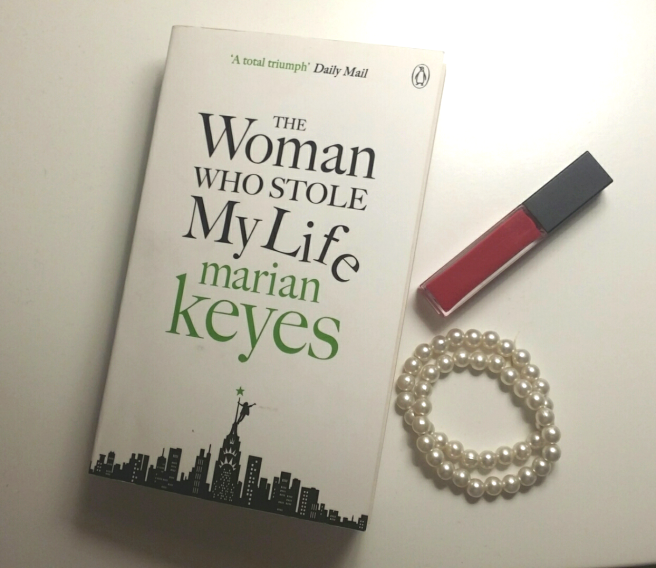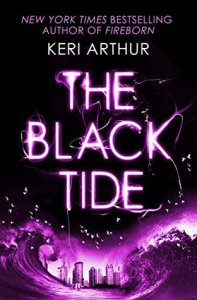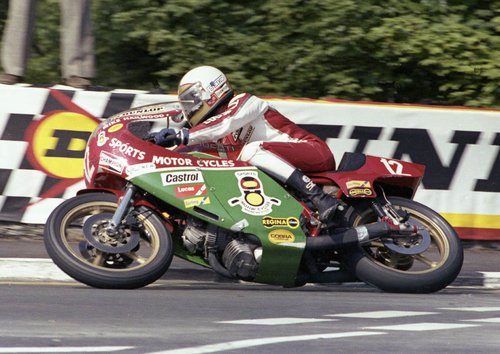
A triumphant return. Mike heading for victory in the 1978 F1 TT.
It was acclaimed as one of the greatest comebacks in motor racing history. After more than a decade away from the most deadly of all motorcycle road racing circuits, the Isle of Man TT, former 9 times motorcycle World Champion, Mike Hailwood, returned to the Island riding an NCR Ducati, to win the 1978 Formula 1 TT. As if to underline he had lost none of his skill and versatility, Hailwood competed again the following year to win the Senior TT on a works Suzuki RG500 two-stroke Grand Prix racer. After his fairy-tale comeback, the 39-year-old then hung up his helmet for good.
2018 will be the fortieth anniversary of Hailwood’s remarkable return to the Island, but it was in 1977, forty years ago in Australia, that a chain of events put in motion Mike’s reunion with motorcycle racing and the TT.
After limited success in car racing, a crash at the 1974 German Grand Prix ended Hailwood’s Formula One car racing career. The crash caused compound fractures of Mike’s left knee, but the right leg sustained a shattered heel and the ankle was pushed down and compacted. It became clear that the doctors couldn’t repair his right foot even after extensive surgery and rehabilitation. Mike and his family decided to move to New Zealand where he went into a partnership with Mclaren Marine.
Hailwood quickly became restless in his adopted country and when in 1977 he was invited to be the guest of honour at a historic race meeting “over the ditch” in Australia, it was just the medicine Mike needed.
The All-Historic meeting was held at Amaroo Park in New South Wales, a circuit well known around the globe for its annual 6 Hour production motorcycle race. It was at this meeting Hailwood met and raced against Australian Jim Scaysbrook. Jim had competed successfully in dirt track, reliability trials, desert racing and speedway, and was the first Australian to race in the AMA Motocross series in 1973.
The main event for motorcycles was the Keith Campbell Memorial unlimited race. Scaysbrook won the race on Alan Puckett’s 7R AJS fitted with a Seeley 630cc G50 engine with Hailwood in second place on the ex Kel Carruthers 500cc Manx Norton owned by motorcycle dealer Barry Ryan. Over the course of the Australia Day weekend, the two men became good friends.
Mike was also mates with Sydney radio broadcaster, Owen Delaney, whom he had met in New Zealand. Delaney offered to sponsor Hailwood to come back for the historic race at the Easter Bathurst meeting. Mike would ride Barry Ryan’s ex-Kel Carruthers Manx Norton again and Jim the Alan Puckett 7R AJS. The event had previously been referred as a historic machine demonstration but was officially upgraded to full race status for the 70 odd entrants. Scaysbrook took the win again at Mount Panorama, with Hailwood in second.
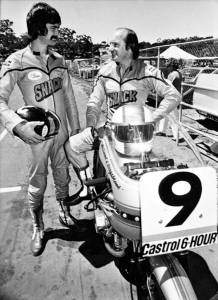
Jim Scaysbrook left and Mike Hailwood prepare for the 1977 Castrol 6 Hour production race.
Hailwood returned to Australia once more for a historic meeting at Winton to pilot Charles Edmonds Manx Norton and was enjoying racing again so much that Delaney started to put together a deal to have Hailwood and Scaysbrook team up for the October Castrol 6 Hour production endurance race.
It was again a turn of events and a casual conversation that contrived to bring Hailwood back to the Isle of Man. In August 1977 a couple of months before his Castrol 6 Hour debut Mike attended the British Grand Prix at Silverstone. It was the first year the British Grand Prix was held on the mainland due to the top GP rider’s boycott of the Isle of Man TT because of the deadly nature of the street course. In the paddock at Silverstone for an F1 TT support race was Steve Wynne, owner of Sports Motorcycles in Manchester. Wynne had entered his rider, Roger Nicholls, several months earlier at the Isle of Man TT on an NCR (the unofficial factory race shop) Ducati 860cc endurance racer.
Wynne was still seething over Roger Nicholls loss to Phil Read in the first-ever F1 TT, which was in effect a single race World Championship. Read, a seven-time World Champion was making a comeback to the Isle of Man and Honda Britain, wanting to cash in on the publicity, provided a special “works” endurance 820cc racer. The F1 TT race was to be held over five laps but was run in wet wintery conditions. Although Read led for most of the race Nicholls needed only one fuel stop on the Ducati to the Honda’s two. At the halfway stage the race officials decided to shorten the five lap race to four, which Honda got wind of, but the officials did not inform the other competitors. This threw race tactics out the window and allowed Honda to dispense with a last lap fuel stop handing Read and Honda the win from Nicholls by under forty seconds.
Hailwood was introduced to Wynne in the paddock and according to Steve, it was a coming together of two upset parties. Wynne because he felt cheated out of the F1 TT title and Hailwood, who had been snubbed by Honda when he’d approached them for a ride in the 1978 season. A short conversation and a handshake were all it took for the wheels to be set in motion for Hailwood’s come back to the Island on a Wynne prepared NCR Ducati. Although Mike had initially offered to ride for free under an assumed name, his longtime friend and manager, journalist Ted Mcauley, convinced Hailwood to “go public” on his comeback. A formal single page agreement was typed by Wynne to make it official and Hailwood was to be paid the princely sum of one thousand pounds.
Back in Australia preparations were also being made for Hailwood and Scaysbrook’s appointment with the Castrol 6 Hour production race. Owen Delaney had a friend called Malcolm Bailey who owned a motorcycle wreckers called Moreparts. Not surprisingly they arranged the purchase of a Ducati, and Scaysbrook, through his contacts in advertising, found sponsorship in the shape of Snack Potato Chips.
Unfortunately, the 1976 model Ducati 900SS purchased used a right foot gear shift, which was not ideal because of Hailwood’s injured right ankle from his Formula One car crash. The 900SS was sold and replaced with a 1977 square case 750SS, which had a left foot shift. The main weakness with the Ducati was its ground clearance around the mainly right-hand corners of Amaroo Park that caused the front header pipe to continually drag on the ground.
The Moreparts team qualified well but were handicapped by the Le Mans style start because the Ducati had to be kick-started, while the competition just pushed a button. Jim and Mike though managed to pick their way through the field finishing sixth outright and second in the 750cc class. A pretty good achievement considering Hailwood insisted he would only compete in the race “just for fun”.
The Moreparts team sponsors, Snack foods, had South Australia targeted next as part of a national campaign to launch their new potato chips brand, so in March 1978 the team were entered in the Adelaide 3 Hour production race at Adelaide International Raceway. This would be only Mike’s second race on the V-twin Ducati. A practice crash by Scaysbrook saw an all-nighter to rebuild the Ducati for the race using parts offered by the Ducati Owners Club from their own bikes.
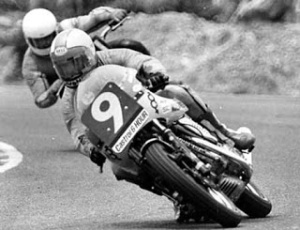
Hailwood on the Ducati 750ss at the 1978 Castrol 6 Hour production race.
During the race, Jim and Mike almost ran out of fuel during their stints, both times somehow managing to get back to the pits. Unfortunately during the rebuild oil had only been replaced in one of the damaged fork legs, which bottomed out under heavy braking locking up the front wheel. A top ten finish in the race was quite an achievement for the duo.
The Easter Bathurst meeting was next on the calendar with Jim riding the Ducati in the 750cc production class while Mike was entered on the Milledge TZ750 Yamaha in the unlimited class. Jim had arranged the ride for Hailwood after Bob Rosenthal, the bike’s usual rider, elected to miss the Bathurst meeting. It would be good preparation for the TT as Mike had also secured, thanks to Mcauley, Martini sponsored Yamaha’s for his TT return.
Bathurst was of mixed fortunes for the pair, with Scaysbrook winning the 750cc production race on the Ducati and setting a new lap record for the class, while, in atrocious weather, Mike finished 9th in the unlimited race having had to pit twice with fouling spark plugs.
Now it was the TT that beckoned. Wynne had successfully secured three of the NCR 860cc Ducati endurance racers. One each for Hailwood, Nicholls and Scaysbrook and received them from the factory with plenty of time to prepare the racers for the F1 TT. Mike also had the Martini sponsored Yamaha’s at his disposal. Known as Team Hailwood Martini, Mike had a production TZ 250 for the Junior TT, an ex-Agostini OW20 for the 500cc Senior TT and a production TZ750 for the 1000cc Classic TT. Turning the spanners for the Martini Team were Mike’s former mechanic Nobby Clark and respected technician Trevor Tilbury.
The first event of the TT meeting was the F1 race which was increased to six laps that year. The crowds of spectators had swollen thanks to Hailwood’s comeback, although there was some trepidation in the minds of the fans. Could Hailwood still do it? What if he got hurt or even worse? The spectators knew Mike was putting the substance of legend on the line. And it wasn’t just Read riding a factory Honda, TT regular and a winner of two 1000cc Classic TT’s John Williams was on a second factory Honda, while Tom Herron, Tony Rutter and Helmut Dahne were on works supported dealer entries.
Read led the 63 competitors away for the six-lap 226.38 mile (364.32km) race. But all eyes were on the number 12 Ducati starting from the fifth row (Mcauley had requested the number 12 from the A.C.U. as it represented the number of Hailwood’s TT victories). The grandstand crowd rose and applauded as Mike set off in pursuit of Read.
From a standing start, he logged a new lap record of 109.87mph (176.8kph) taking 90 seconds of Read’s existing record. Hailwood, who was ahead on time, chipped away at Read’s lead until they were on the road together going over the Mountain. Hailwood was 100 metres ahead as they came down the Mountain and headed for a fuel stop. They pitted together with Read getting away first and Hailwood in close pursuit. Soon Mike was in Read’s wheel tracks pushing the Honda along. Blue smoke started to appear from the Honda’s exhaust on the down changes and with 64 miles (103km) to go the Honda expired and Read’s race was run. To the roar of the crowd, Hailwood took the checkered flag and another TT victory. On his way to the token TT F1 World Championship, Hailwood had also set a new lap record of 110.627mph (178.037kph) for the class.
Read later admitted he had over-revved the Honda to try and stay ahead of Hailwood, but unbeknown to Mike when he shut the Ducati’s throttle off crossing the line a bevel gear failed. A hundred metres earlier and it would have been John Williams on the other factory Honda that would have won the race. It was a fairytale come true for Hailwood, Wynne, and Ducati.
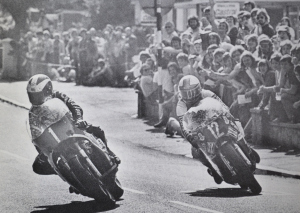
Hailwood hunts down Read in the 1978 F1 TT.
Unfortunately, the other three TT races Team Hailwood Martini had entered weren’t to be so successful. In the Senior TT, a steering damper on the OW20 TZ500cc Yamaha broke causing Hailwood to stop at Ramsay to try and effect repairs before returning to the pits and putting himself out of contention. In the Junior TT Mike finished in 12th place on the production TZ250 and in the 1000cc Classic TT, a faulty crankshaft failed on the TZ750 ending his race. Such is the fickleness of the TT.
Mike had agreed to do some TT F1 races in England, as part of the MR TOPPS/ACU TT F1 British Championship series and the British Grand Prix TT F1 support race. Post TT was Mallory Park a tight short circuit not suited to the Ducati. Showing skill and patience Mike eventually romped home to victory beating again many of his TT rivals and in Wynne’s opinion a greater triumph than the TT win. Donnington Park was next but Hailwood crashed out of the race while in the lead, although he set an equal lap record to the eventual winner Roger Marshall on a Honda. At the British Grand Prix TT F1 support race, the Ducati was out powered on Silverstone’s high-speed straights. John Cowie on a Kawasaki won the race, but Mike still managed a third place podium. However, Hailwood still had unfinished business in Australia
With new sponsorship from Australian clothing manufacturer Golden Breed, the now outclassed Ducati 750cc SS was entered in the October 1978 Castrol 6 Hour production race. Teamed once again with Jim Scaysbrook things didn’t start well when Mike crashed during Thursday practice. A rebuild was required and again it was local Ducati owners that helped out with spare parts. A new rule that year required a nominated reserve rider. Stu Avant was the rider and he was obliged to practice on the Ducati. Unfortunately, Stu crashed the bike again, which necessitated another rebuild. On Saturday during qualifying, Mike put in one lap and the engine blew a big end bearing.
Another rebuild, but by race day they still hadn’t qualified to compete in the race, but the officials wisely decided to turn a blind eye and allowed them to start. Mike did the first stint and was practically last away at the Le Man’s start because of his injured ankle and having to kick-start the Ducati. Hailwood had them into the lead of the 750cc class when he handed over to Scaysbrook. Ten laps later, after such a promising start, the Ducati slid out from underneath Jim in The Loop and their race was over.
This wasn’t the end of Mike’s production racing adventures in Australia though. He teamed with Scaysbrook again for the Adelaide 3 Hour in early 1979 on Jim’s own Honda CB900FZ. But fate was against them again and a loose number plate had the duo black-flagged but they managed to resume the race after repairs had been made and finished a creditable 10th place.
However, Mike was not done with the Isle of Man TT yet and entered again in 1979 on a Sports Motorcycle supplied factory NCR Ducati’s in both the TT F1 race and the 1000cc Classic TT. He was also entered in the 500cc Senior TT on a Suzuki GB RG500. But the alarm bells started ringing for the Sports Motorcycles team at a test session and press conference at Misano in Italy for the NCR Endurance Racing Team. Mike’s TT F1 machine was unprepared and sported a gear-shift the reverse of what Ducati knew Hailwood required. The problem was Ducati’s ongoing financial situation, which was controlled by an Italian Government holding body EFIM who would only supply a budget for the Endurance Team.
Mike went out and tested the cobbled together machine only to select a false neutral and instinctively hit second gear instead of fourth. The resulting high side crash gave Hailwood three broken ribs and a badly bruised arm only two months out from the TT. In the meantime, a financial compromise was found with Ducati to pay for the racers by invoicing the British importer Coburn and Hughes who would then invoice Sports Motorcycles for the machines.
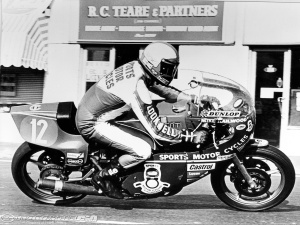
Hailwood on his way to victory during the 1978 F1 TT.
During practice for the F1 TT, it became clearly apparent that the NCR Ducati handled woefully. It no longer used the Vaspa frame of the 1978 machine and the FIM had tightened the TT F1 regulations, which now required the use of production crankcases instead of the special sand cast ones of the previous year. Hailwood also told the team the engine was less powerful than the ’78 unit. Something needed to be done. The Sports Motorcycles team decided to send for Roger Nicholls 1978 TT F1 Ducati racer, which was on display in the Luton showroom of the Ducati importer Coburn and Hughes. The idea was to transplant the 1979 engine into the 1978 chassis.
The bike arrived midday Thursday of practice week and the engine was installed into the frame, but there were problems with fitting the exhaust system of the ‘78 bike plus numerous ancillary parts that needed new brackets made. Finding enough steel in the early hours of the morning was a problem but fortunately, a supply was found at the back of the workshop which was the generator room of the Palace Hotel where old furniture was stored, including some steel bed frames. After a mammoth effort, Hailwood had something that represented a competitive motorcycle to defend his and Ducati’s title on. It was aptly nicknamed the “Bedstead Special” by MCN journalist Peter Howdle who knew how much work had gone into preparing Mike’s bike.
It has gone down history that Hailwood finished fifth in Saturday’s F1 TT, although he had somehow managed to claw his way up to third on the recalcitrant Ducati at the halfway mark. On the final lap of six, plunging down Bray Hill, Mike lost fifth gear. The over-revving engine then cut out. Hailwood stopped at Hillberry to find vibration had broken the bracket holding the battery, which came adrift disconnecting the wires. Mike reattached the battery, shoved it back into the bike to limp home fifth.
But Hailwood’s big moment was to come in Monday’s Senior TT. Riding a Suzuki RG500 he became only the third man to lap the Island in under 20 minutes on his way to victory setting a new lap record of 19m 51.2s at an average speed of 114.02mph (183.497kmh). It was a victory that confirmed what everybody knew, Hailwood was still master of the Island.
In preference to the NCR Ducati that was supplied specifically for Friday’s 1000cc Classic TT, Hailwood decided to use the Suzuki RG500. It became a race that many would compare to the epic battle between Mike and “Ago” in the 1967 500cc TT. His main opponent was Glaswegian Alex George aboard the “works” 998cc Honda and it would become a two horse race with the other riders becoming extras as the drama played out.
Mike’s Suzuki had been rebuilt overnight after a minor fault was discovered, but it was George who led by 9.2 seconds after lap one of the six-lap race. Hailwood closed the gap to 4 seconds on the next. After posting identical lap times at the halfway stage it was Honda works team efficiency and the advantage of a quick filler that sorted out the pit stops. It was also the first time at midpoint a TT had taken under an hour. George led by 4.2 seconds but by lap 5 Hailwood had taken the lead by a mere four-fifths of a second and still held an advantage on the last lap at Ballacraine, but at Ramsey, he was behind again. George had come back from behind and maintained his lead to take the win by just 3.4 seconds. Hailwood had announced that it would be his last TT and although he did so without taking another win the fans were not disappointed.
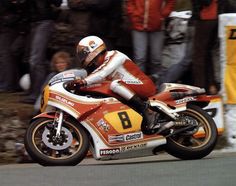
Mike on the Suzuki RG500 during the 1979 Senior TT.
Hailwood was pencilled in once more to take in the post TT races at Mallory Park, which was part of the Forward Trust/MCW TT Formula 1 Championship but decided to look for more competitive machinery than the NCR Ducati. A Paul Dunstall Suzuki was his choice but brake issues saw Mike withdraw from the running. Donnington Park was the next round and Mike’s last race. A crash in practice saw him heading for the hospital with a broken collarbone. After having pins inserted he checked himself out against Doctors orders on race day and returned to the track to be driven around the circuit to say goodbye to the thousands of fans who had come to see him.
By then Hailwood had moved back to England and had opened a motorcycle dealership in Birmingham with friend and former 250cc World Champion Rod Gould. Only two years later in 1981, the sad epitaph to this colossus of motorcycle racing was written. A tragic road accident claimed Mike and his 9-year-old daughter Michelle’s lives. His son, 7-year-old David, was also in the car but survived with minor injuries.
In 1968 Hailwood was awarded an M.B.E. in the Queens Honours List for his services to motorcycling and he also was awarded the Seagrave Trophy in 1979 in recognition of his two TT wins in 1978 and 1979. Mike became a Federation Internationale de Motocyclisme “official legend” in 2000 and was inducted into the American Motorcycle Association Hall of Fame that same year. 2001 saw Mike’s induction into the International Motorsports Hall of Fame. Hailwood had also been awarded the George Medal for bravery after pulling Clay Regazonni from his burning F1 car at the 1973 South African Formula One Grand Prix.
During a Grand Prix career that spanned 10 years from 1958 to 1967, Hailwood won 76 Grand Prix and claimed 112 podiums from 152 starts. He was World Champion 9 times scoring three 250cc World Championships, two 350cc World Championships and four 500cc World Championships. He was also the first rider to win four consecutive 500cc World Championships. Mike won a total of 14 Isle of Man TT’s before retiring permanently from the sport.
“Mike the bike” M.B.E. G.M.; to many the greatest motorcycle racer of all time.
Words © Geoff Dawes 2017. Images courtesy of http://www.ducati.com http://www.motorycleclassics.com, http://www.pinterest.com,www.rezbikes.com, http://www.roadtrackanddriver.blogspot.com.au. Videos courtesy Youtube and Vimeo.
Advertisements Share this:
